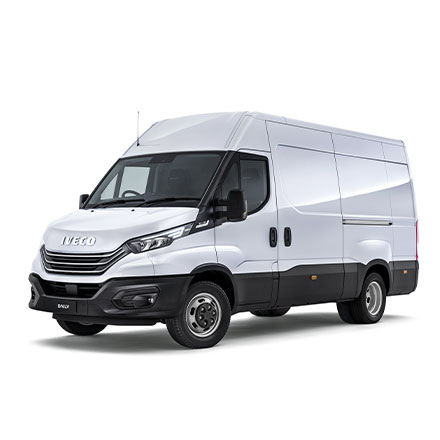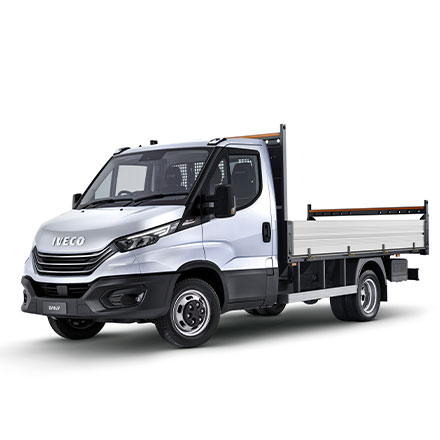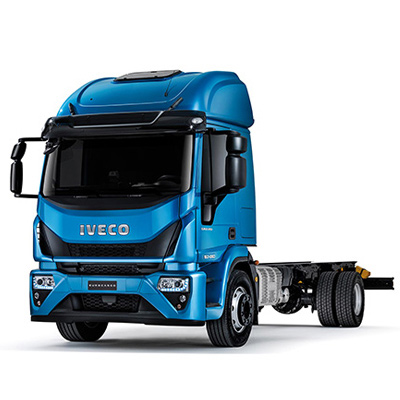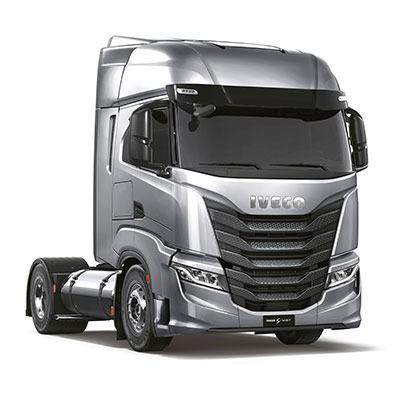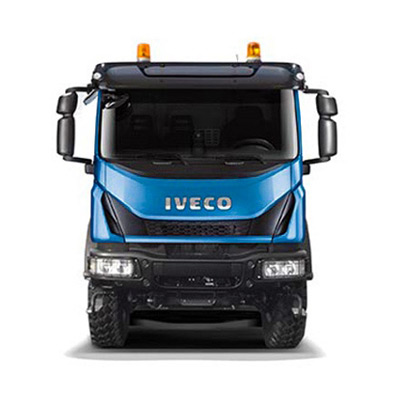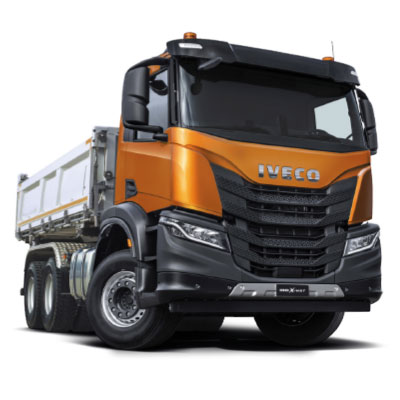Please Wait
IVECO NATURAL GAS TECHNOLOGY
IVECO IS READY FOR SUSTAINABLE TRANSPORT. ARE YOU?

In light, medium and heavy commercial vehicles sector, natural gas technology offers a significant advantage over other alternative drives. It works. Thanks to intensive development since 1996, IVECO mature gas-powered vehicles have been proving their performance in terms of reliability, environmental commitment and return on investment for decades, both in municipal use, regional routes and in long-distance transport.
ALL OUR EXPERIENCE AT YOUR SERVICES

IVECO also provides a close-knit service network of IVECO natural gas specialists throughout Europe, there to support you at all times. Whether you need a panel van for inter-urban use, a medium-weight tipper for transporting construction materials or a heavy articulated truck for international long-distance transport, when deciding on an IVECO natural gas vehicle you benefit from sophisticated technology that works robustly and reliably. All of this is thanks to our continued commitment, and research & development into sustainable transport.
NATURAL GAS AND BIO-METHANE

Sustainability
Good for you. Good for the environment: Natural gas and biomethane
Our driving force behind the development of gas technology has always been the attractive environmental balance of Natural Gas and Biomethane: Up to 99% lower particulate matter and up to 95% lower CO₂ emissions when using bio-methane are real arguments.
This is why Liquefied Petroleum Gas (LPG), which is widely used in the passenger car sector, does not play a role in our gas vehicles: LPG is a waste product from oil production and refineries and leads to significantly higher CO₂ emissions than our favoured fuels - natural gas and Bio-Methane.
Natural gas, also known as methane, is a fossil fuel such as petrol and diesel, but burns in a much more environmentally friendly way. The exhaust primarily emits steam - sulphur dioxides and soot particles are hardly emitted. The emissions of CO₂, nitrogen oxides and carbon monoxide are significantly lower than those of diesel vehicles. Natural gas is non-toxic and odourless. With bio-methane increasingly being added to natural gas, the environmental impact is constantly improving.
Biogas, also bio-methane, corresponds in its chemical composition to natural gas, but is not of fossil origin. Biogas is obtained from plants and, during combustion, only the CO₂ that the plants absorbed during their growth is returned to the atmosphere - this reduces the CO₂ footprint by up to 95% compared to diesel vehicles. Fewer and fewer plants are being cultivated specifically for biogas production, because the gas can also be obtained from plant waste that has to be disposed of anyway.
Technical Specifications
The difference between CNG and LNG
Natural gas and bio-methane are available at filling stations in two different forms, both of which have their advantages: CNG and LNG. To ensure that you find the optimum solution for every transport task with regard to supply and range, we offer you both CNG and LNG tank concepts for our vehicles - and on request even the combination of CNG and LNG tanks.
CNG stands for Compressed Natural Gas: Compressed methane is stored in gaseous form at approximately 200 bar and is therefore measured in kg. 1 kg CNG corresponds to about 1.3 litres of diesel.
LNG means Liquefied Natural Gas and refers to Natural Gas and Bio-Methane which is liquefied by strong compression or cooling to -161 to -164°C. As a result, it requires only one six-hundredth of the volume of gaseous methane in the tank, thus enabling autonomy ranges of up to 1,600 km. This is good, because the LNG filling station network is currently being developed throughout Europe. this offers an advantage. The natural gas distribution network in the UK and Europe is expanding fast. Overall, the network today covers the main European freight routes with over 400 truck gas refuelling stations, and by the end of 2019 it is expected to exceed 500. Modern IVECO telematics systems therefore take fuel supply and filling station network into account when planning the route and thus ensure that the supply of the right gas is always guaranteed.

